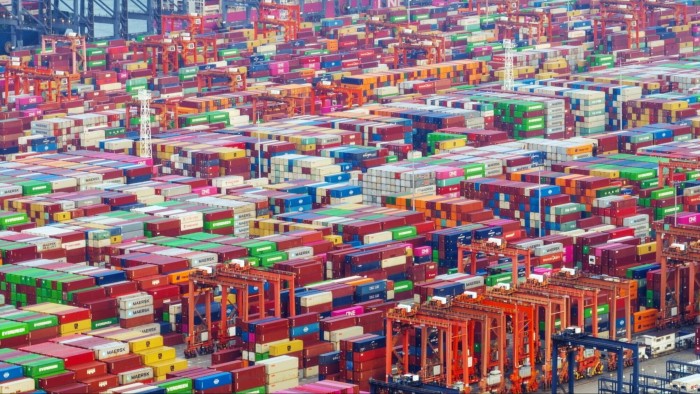Unlock the White House Watch newsletter for free
Your guide to what Trump’s second term means for Washington, business and the world
The writer is chief Asia economist at Morgan Stanley
By now, it is abundantly clear that US-China trade has collapsed, as tariff rates are too prohibitive. The recognition of the extent of the disruption to bilateral trade could be an initial gateway towards starting negotiations. As talks progress, there could be room for a mutual agreement to gradually remove the tit-for-tat tariffs — the ones that were put in place by the US after China had retaliated against the imposition of reciprocal tariffs.
But average weighted tariff rates will still end the year 34 percentage points higher than they were at the start of the year (which were then at an 11 per cent level imposed after the first round of trade tensions in 2018-19). Investors should accept that fixing the issues underpinning trade tensions is not going to be quick and easy, for the following reasons.
First, the Trump administration has imposed tariffs because it thinks that will significantly reduce the US trade deficit and promote onshore production, especially for critical goods. But both of these issues are not likely to be resolved quickly by the imposition of tariffs or the completion of trade deals with numerous trade partners.
The sizeable trade deficit reflects a deeper issue about the behaviour of US consumer spending (high) and saving (low). Increasing manufacturing capacity in the US would take time. It is not just about setting up manufacturing plants but rather building a supply chain that is US-centric. At the starting point, US participation in global manufacturing value chains is just 13 per cent, while China is more than three times higher at 41 per cent.
Second, in China, there is a very clear policy preference for generating growth via investment, even more so during a downturn. Policymakers prefer to stimulate investment because they believe it creates tangible assets and boosts productivity rather than using it for consumption, which would only mean a rise in debt levels for future generations. Moreover, from a geopolitical standpoint, China aspires to be on the technological frontier and retain its cutting edge when it comes to high-end manufacturing.
Against this backdrop, a sustainable turnaround in the bilateral trade balance between the US and China would require fundamental lasting changes to the growth model of these two economies — a tall order. Even if policymakers force the issue by requiring China to step up its active purchases from the US via a trade agreement, implementing it will still be fraught with challenges.
The US may not have a ready sizeable supply of goods to export to China and strategic competitive considerations may yet be a hindrance. The US is unlikely to be unwilling to sell high-tech and defence equipment to China, and China will not want to rely on the US as a key supplier of food and energy, preferring to diversify its sources.
Finally, from a negotiating standpoint, we believe that both the US and China will want a comprehensive deal, but given the multiple issues involved, these discussions are likely to be complex and will take time to complete.
At the moment, investors appear to be taking comfort in the pause in reciprocal tariffs and the fact that trade outside of US-China is on the mend. But we are less confident about the growth outlook. Uncertainty persists and there has already been damage done to the cycle. For China, it is difficult to envisage a scenario in which tariffs return quickly to January 2025 levels.
Recommended
For Asia outside China, trade agreements may be reached but we are unsure if tariffs will go below 10 per cent on the signing of a deal and whether all these agreements will be accomplished before the expiry of the pause.
Elevated uncertainty weighs on the business cycle and causes the corporate sector to wait and see if it relates to their investment and hiring decisions. The ensuing slowdown in capital expenditure and trade will be the dominant channel through which tariff policy exerts the biggest growth drag on Asia. We therefore expect China’s GDP year-on-year growth to slow from 5.4 per cent in the first quarter of this year to 3.7 per cent in the fourth quarter, while the rest of Asia will face downward pressures on growth to varying degrees, depending on how exposed they are to trade.
The more trade-oriented economies (ie those with a high ratio of goods exports to GDP and that enjoy a stronger contribution to GDP from net exports) will face greater growth damage, just as in 2018-19 when the Chinese economy cooled significantly. We are headed towards a sharp, synchronous slowdown unless we see a quick lifting of tariff-related uncertainty.



